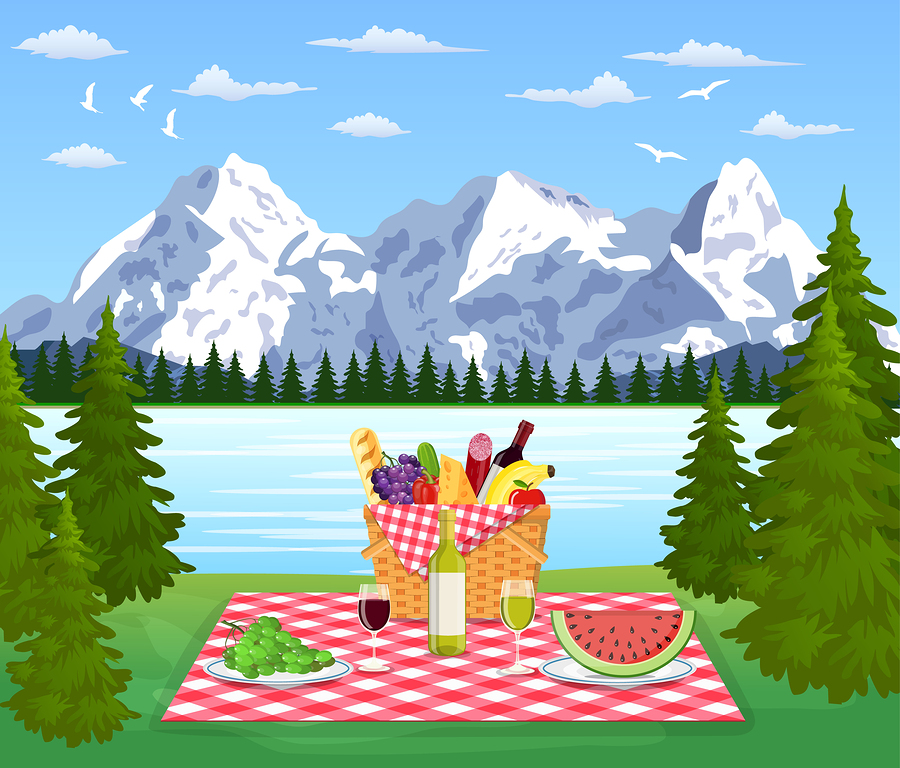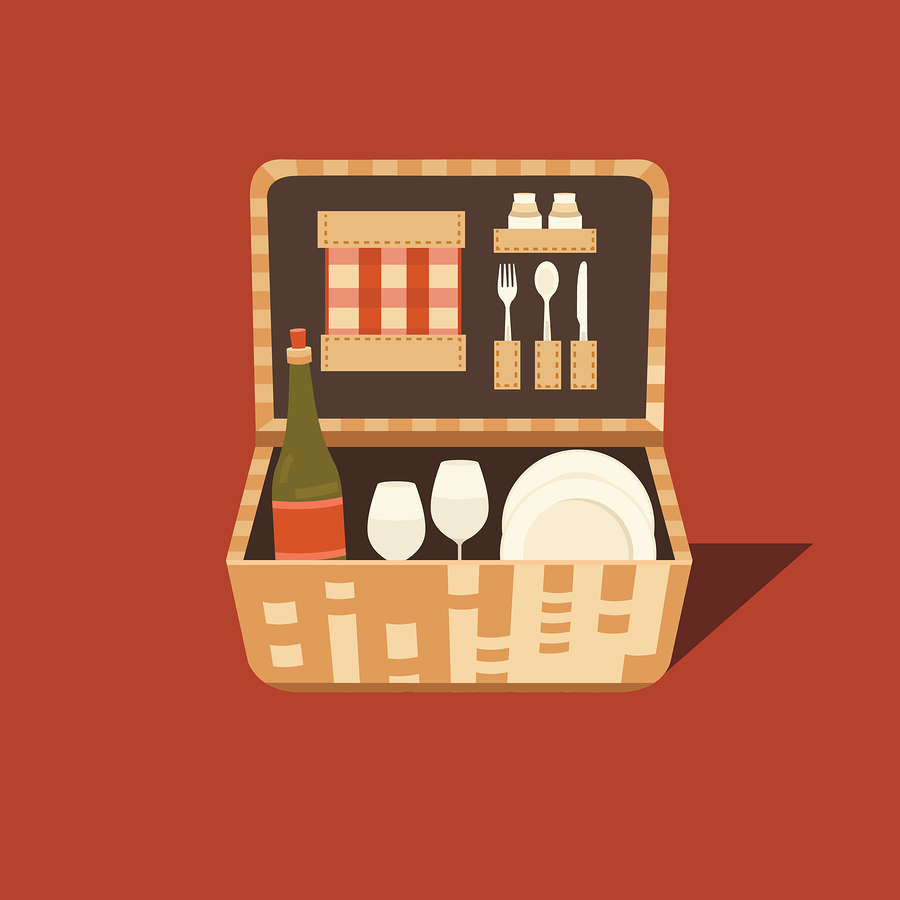Summer’s the only time where eating outside is actually enjoyable, so you should take full advantage of picnic season.
Eating in a park or beach may be serene, but it isn’t sanitary. Correctly packing, transporting, and eating a picnic meal isn’t so simple – your outdoor environment can quickly contaminate your food if you’re nonchalant about food safety.
Liz Weinandy, MPH, RDN, a dietitian at The Ohio State University Wexner Medical Center shared her best picnic practices, including what to pack, how to keep foods safe, and other do’s and don’ts when you’re out picnicking.
Do – Pack wisely:
Your food is only as good as the container that’s holding it (that’s a saying, probably, somewhere). Weinandy suggests coolers made from fiberglass, plastic, or even steel, rather than the traditional Yogi Bear-era weave baskets or insulated storage bag.

Photo Credit: Rogatnev/BigStock
And because you’re likely to fill that cooler with ice packs and food, opt for a container with wheels.
“Definitely packing right before leaving is a good idea—put cold foods closest to the ice or gel packs,” she says. “Packing a cooler that is full rather than half full will extend the time the items inside stay cold.”
Don’t – Leave food out too long:
Non-perishable foods can be left in the open, as long as they’re clear of any picnic ants or the like. Perishable food items, however, shouldn’t be sitting out for more than two hours, due to the summer heat.
“During the summer this time often shortens because in hot weather (above 90 degrees Fahrenheit), food should never sit out for more than one hour,” she says. “Bacteria growth is more rapid at hot temperatures. Meats, cold foods, and mayonnaise-based options like potato salads are safe as long as they remain in a cooler and on ice.”
Related: What You Didn’t Know About Best-Before and Expiry Dates
Do – Keep hot foods hot, cold foods cold:
“A good rule of thumb is to remember cold foods should be kept at below 40 degrees Fahrenheit and hot foods should be kept above 140 degrees Fahrenheit,” Weinandy says.
To keep foods cool, store them in your container with plenty of ice or ice packs. To keep foods warm, you can use a thermal or insulated bag.

Photo Credit: Dasha Efremova/BigStock
Fruit is a gray area – they’re regularly left out, but should they be?
Whole fruits are non-perishable, so they don’t need to be kept cold. Cut fruit, however, will need protection from the heat. Salads should always be stored with ice packs and left in the cooler, too. As long as the temperatures are cold enough in there, the foods should be good for several hours.
Don’t – Open the cooler too much:
“Something to keep in mind is that opening the cooler lid frequently will raise the temperature of the cooler more quickly than if the lid remains mostly closed,” she says.
Make sure your picnic guests are aware of this rule, too!
Related: Preventing the Unseen Dangers in Your Summer Cookout
Don’t – Keep leftovers:
“I have been to many picnics where food is all spread out, everyone eats shortly after and the total time is around 30-45 minutes,” she says.
“Most foods can be set out for this long without a problem. However, it would be best to throw any highly perishable foods away after eating. Most people don’t like to throw away food though, so if this is the case, keep these perishable foods in the cooler for the whole day. Only keep leftovers if the food has not sat out and it was stored in the cooler. The food should still be on ice in the cooler when you get home.”
The best way to ensure your food is still safe to eat is to bring a food thermometer to your picnic.
But overall, Weinandy says to always err to the ‘golden rule’ of food safety: “When in doubt, throw it out.”












